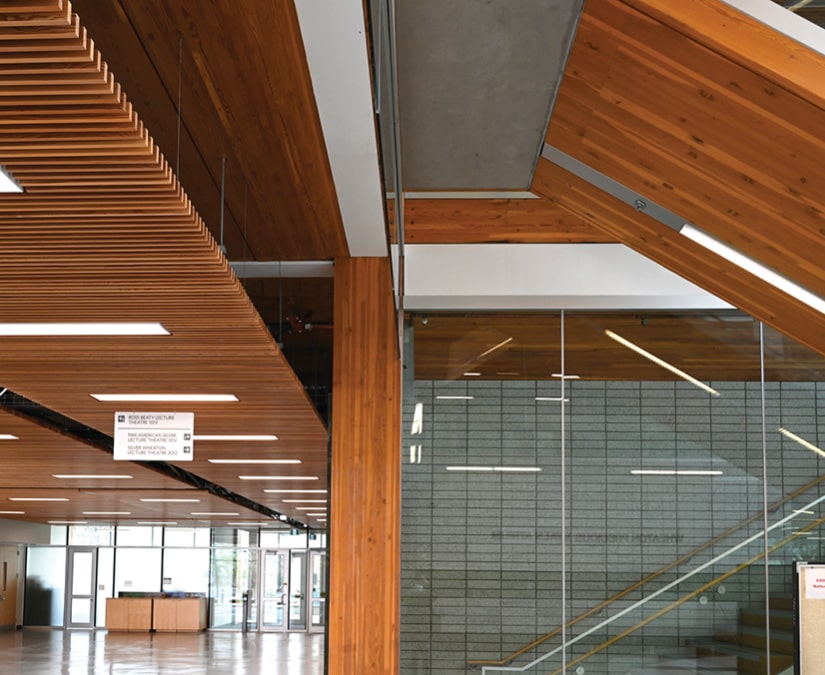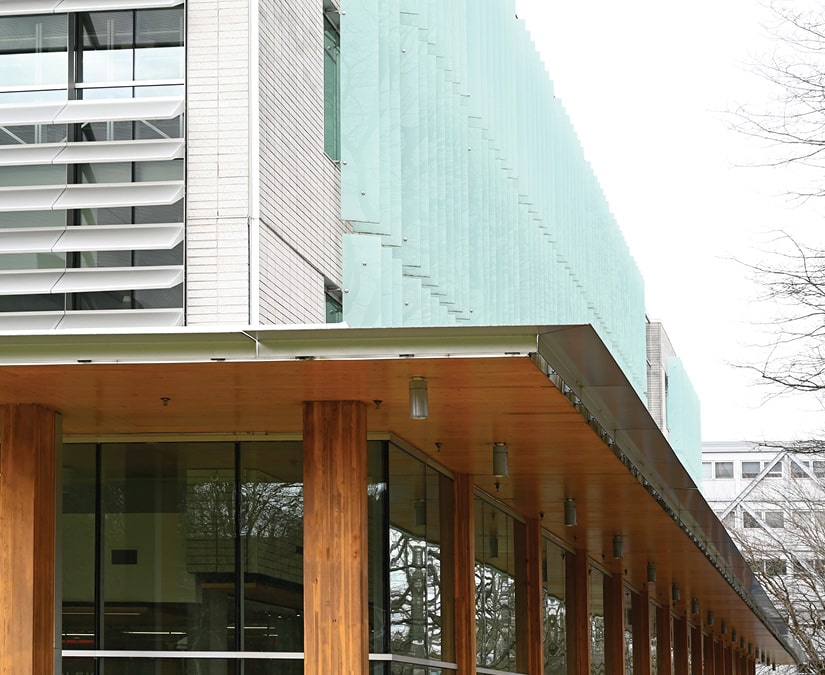


At its time in 2012, the University of British Columbia’s Earth Sciences building defied gravity with its five-storey floating staircase and claimed a spot as North America’s largest panelized wood building. The building’s main goal was to enhance the faculty of science’s public image and serve as a new home for three UBC Sciences departments, namely the Earth, Ocean and Atmospheric Sciences, Statistics, and the Pacific Institute of the Mathematical Sciences.

It was designed to be a sustainable and efficient building; thus, it was only natural that wood was the main building material, as it would sequester about 1,094 tonnes of CO2. The building would feature several innovative Mass Timber construction techniques from; the hybrid floor system made of LSL (Laminated Strand Lumber) and concrete, a roof and accompanying canopies made of CLT (Cross-laminated Timber), its signature ribbon-like cantilevered floating staircase, as well as full storey hybrid steel Glulam (Glu-laminated) transfer trusses that carry the load of the remaining floors by converting the whole second storey into a “roof truss”.
The University of British Columbia’s Earth Sciences building created an environment that cultivated sustainable innovation, from the decision to use wood to sequester CO2 to its continuing role to nurture the future generation and carry its legacy.

Register for a Technical Learning Session
Sign up for MTC Newsletter and keep up to date with all our progress.